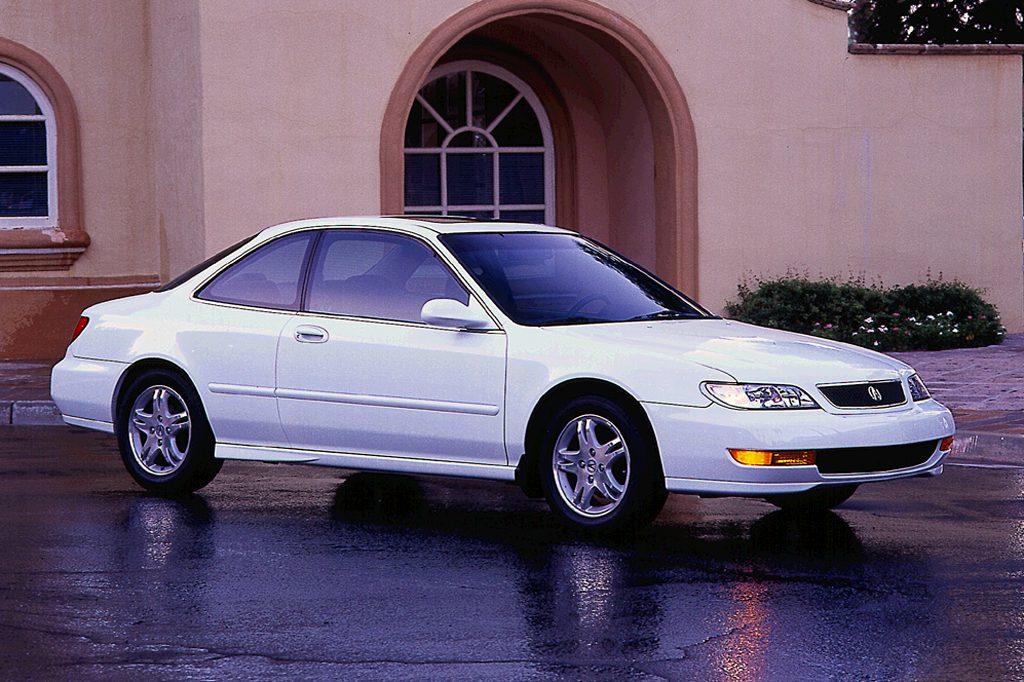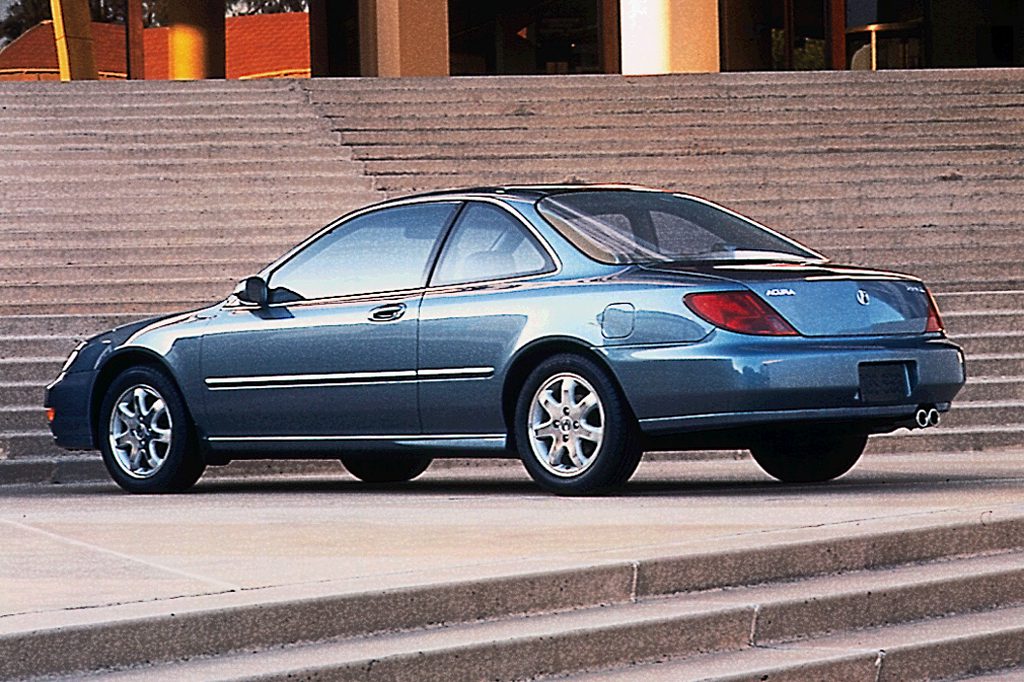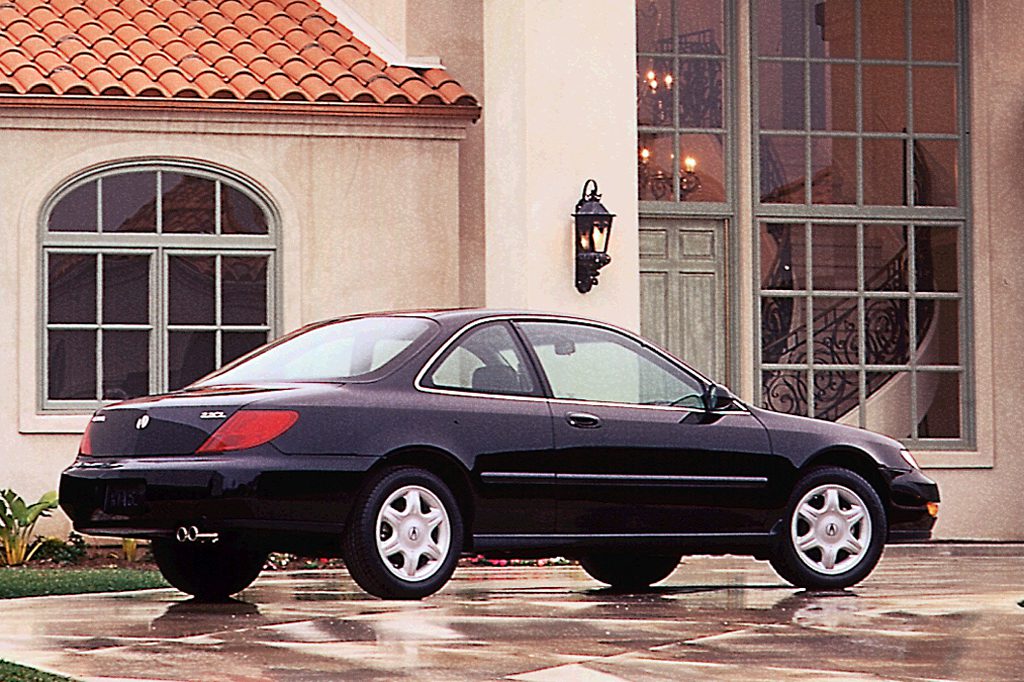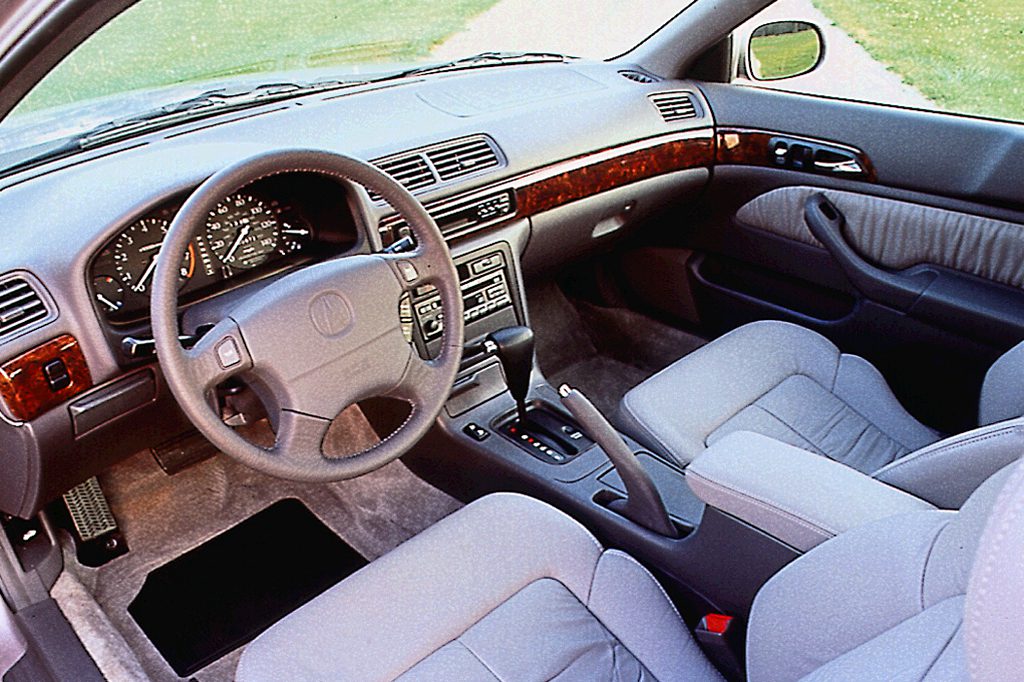| Premium midsize car; Built in USA |
|
|
| Good condition price range: $1,800 – $3,800* |

1998 Acura 2.3CL

1998 Acura 3.0CL

1998 Acura 2.3CL

1998 Acura CL interior

1998 Acura 2.3CL
| Pros: |
|
| Cons: |
|
All told, this is a competent, pleasant, and well-constructed coupe, marred only by unsatisfying operation of the automatic transmission. However, most of the CL’s virtues are also available in the appealing but less-costly Honda Accord. That’s no surprise, since the cars share a number of components.
Overview
American Honda’s luxury division introduced a 4-cylinder 2-door midsize coupe in spring 1996, as an early ’97 model. Dubbed 2.2CL, it was the first Acura model to be designed and built in the United States. Also used in the latest Honda Accord, its 2.2-liter 4-cylinder engine developed 145 horsepower. A companion 3.0CL, powered by a new 200-horsepower 3.0-liter V6 engine, arrived in fall 1997. Assembled at Honda’s plant in Ohio, along with the smaller Honda Civic, the CL was based on the same front-drive design as Honda’s Accord. Styling and interior features differ, however. In size and price, the CL was slotted between Acura’s Integra and TL. Both engines were produced in Ohio. Each used a single overhead camshaft, with four valves per cylinder and Honda’s VTEC (variable valve timing) design. A 5-speed manual transmission was standard on the 2.2CL. A 4-speed automatic transmission was standard on the 3.0CL, and optional on the 2.2CL.Dual airbags and antilock 4-wheel disc brakes were standard on both versions of the CL. A standard keyless entry system eliminated the need for an exterior trunk lock. Leather upholstery was included in an optional Premium Package.
Yearly Updates
| 1998 CL For 1998, the 2.2CL coupe was transformed into a 2.3CL, by switching from a 145-horsepower 2.2-liter 4-cylinder engine to a 150-horsepower, 2.3-liter four. As before, the 4-cylinder engine came with either manual or automatic transmission. Wheels were newly designed this year, and the grille was revised. Steering-wheel audio controls were installed. |
| 1999 CL Leather seating for the base model topped the ’99 additions to the CL. This year, both models got leather interior trim as standard, and added a trunk cargo net. Acura skipped the 2000 model year, preparing a redesigned CL coupe as an early 2001 model. |
